mTORC1 maintains the tumorigenicity of SSEA-4(+) high-grade osteosarcoma
- PMID: 25853231
- PMCID: PMC4389812
- DOI: 10.1038/srep09604
mTORC1 maintains the tumorigenicity of SSEA-4(+) high-grade osteosarcoma
Erratum in
-
Author Correction: mTORC1 Maintains the Tumorigenicity of SSEA-4 + High-Grade Osteosarcoma.Sci Rep. 2021 Oct 27;11(1):21434. doi: 10.1038/s41598-021-00930-2. Sci Rep. 2021. PMID: 34707225 Free PMC article. No abstract available.
Abstract
Inactivation of p53 and/or Rb pathways restrains osteoblasts from cell-cycle exit and terminal differentiation, which underpins osteosarcoma formation coupled with dedifferentiation. Recently, the level of p-S6K was shown to independently predict the prognosis for osteosarcomas, while the reason behind this is not understood. Here we show that in certain high-grade osteosarcomas, immature SSEA-4(+) tumor cells represent a subset of tumor-initiating cells (TICs) whose pool size is maintained by mTORC1 activity. mTORC1 supports not only SSEA-4(+) cell self-renewal through S6K but also the regeneration of SSEA-4(+) TICs by SSEA-4(-) osteosarcoma cell dedifferentiation. Mechanistically, active mTORC1 is required to prevent a likely upregulation of the cell-cycle inhibitor p27 independently of p53 or Rb activation, which otherwise effectively drives the terminal differentiation of SSEA-4(-) osteosarcoma cells at the expense of dedifferentiation. Thus, mTORC1 is shown to critically regulate the retention of tumorigenicity versus differentiation in discrete differentiation phases in SSEA-4(+) TICs and their progeny.
Figures
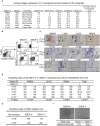
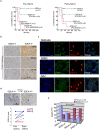

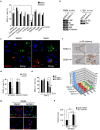
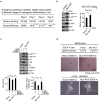
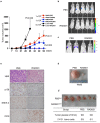
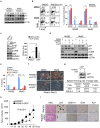
Similar articles
-
Metastatic osteosarcoma induced by inactivation of Rb and p53 in the osteoblast lineage.Proc Natl Acad Sci U S A. 2008 Aug 19;105(33):11851-6. doi: 10.1073/pnas.0805462105. Epub 2008 Aug 12. Proc Natl Acad Sci U S A. 2008. PMID: 18697945 Free PMC article.
-
FOXP1 drives osteosarcoma development by repressing P21 and RB transcription downstream of P53.Oncogene. 2021 Apr;40(15):2785-2802. doi: 10.1038/s41388-021-01742-4. Epub 2021 Mar 14. Oncogene. 2021. PMID: 33716296
-
PHGDH inhibition and FOXO3 modulation drives PUMA-dependent apoptosis in osteosarcoma.Cell Death Dis. 2025 Feb 12;16(1):89. doi: 10.1038/s41419-025-07378-6. Cell Death Dis. 2025. PMID: 39934141 Free PMC article.
-
Molecular pathogenesis of osteosarcoma.DNA Cell Biol. 2007 Jan;26(1):1-18. doi: 10.1089/dna.2006.0505. DNA Cell Biol. 2007. PMID: 17263592 Review.
-
Developmental pathways hijacked by osteosarcoma.Adv Exp Med Biol. 2014;804:93-118. doi: 10.1007/978-3-319-04843-7_5. Adv Exp Med Biol. 2014. PMID: 24924170 Review.
Cited by
-
Mechanically tunable coaxial electrospun models of YAP/TAZ mechanoresponse and IGF-1R activation in osteosarcoma.Acta Biomater. 2019 Dec;100:38-51. doi: 10.1016/j.actbio.2019.09.029. Epub 2019 Sep 19. Acta Biomater. 2019. PMID: 31542501 Free PMC article.
-
Modeling the Tumor Microenvironment and Pathogenic Signaling in Bone Sarcoma.Tissue Eng Part B Rev. 2020 Jun;26(3):249-271. doi: 10.1089/ten.teb.2019.0302. Epub 2020 Feb 14. Tissue Eng Part B Rev. 2020. PMID: 32057288 Free PMC article. Review.
-
Antitumor effect of focal adhesion kinase inhibitor PF562271 against human osteosarcoma in vitro and in vivo.Cancer Sci. 2017 Jul;108(7):1347-1356. doi: 10.1111/cas.13256. Epub 2017 Jun 8. Cancer Sci. 2017. PMID: 28406574 Free PMC article.
-
MUC1 expression is associated with ST3GAL2 and negatively correlated with the androgen receptor in castration-resistant prostate cancer.Glycoconj J. 2024 Dec;41(6):381-394. doi: 10.1007/s10719-024-10173-8. Epub 2024 Dec 24. Glycoconj J. 2024. PMID: 39718721 Free PMC article.
-
Understanding and Modeling Metastasis Biology to Improve Therapeutic Strategies for Combating Osteosarcoma Progression.Front Oncol. 2020 Jan 31;10:13. doi: 10.3389/fonc.2020.00013. eCollection 2020. Front Oncol. 2020. PMID: 32082995 Free PMC article. Review.
References
Publication types
MeSH terms
Substances
LinkOut - more resources
Full Text Sources
Other Literature Sources
Medical
Research Materials
Miscellaneous

